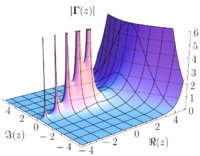
An elementary proof of Euler's formula using Cauchy's method
Sign Up to like & getrecommendations! Published in 2021 at "Topology and its Applications"
DOI: 10.1016/j.topol.2020.107558
Abstract: Abstract The use of Cauchy's method to prove Euler's well-known formula is an object of many controversies. The purpose of this paper is to prove that Cauchy's method applies for convex polyhedra and not only… read more here.
Keywords: elementary proof; cauchy method; euler formula; method ... See more keywords

Two $q$-analogues of Euler’s formula $\zeta (2)=\pi ^2/6$
Sign Up to like & getrecommendations! Published in 2019 at "Colloquium Mathematicum"
DOI: 10.4064/cm7686-11-2018
Abstract: It is well known that $\zeta(2)=\pi^2/6$ as discovered by Euler. In this paper we present the following two $q$-analogues of this celebrated formula: $$\sum_{k=0}^\infty\frac{q^k(1+q^{2k+1})}{(1-q^{2k+1})^2}=\prod_{n=1}^\infty\frac{(1-q^{2n})^4}{(1-q^{2n-1})^4}$$ and $$\sum_{k=0}^\infty\frac{q^{2k-\lfloor(-1)^kk/2\rfloor}}{(1-q^{2k+1})^2} =\prod_{n=1}^\infty\frac{(1-q^{2n})^2(1-q^{4n})^2}{(1-q^{2n-1})^2(1-q^{4n-2})^2},$$ where $q$ is any complex number with $|q| read more here.
Keywords: formula zeta; euler formula; two analogues; infty frac ... See more keywords